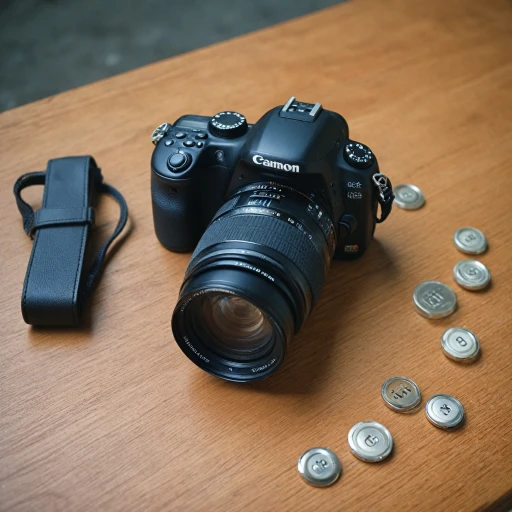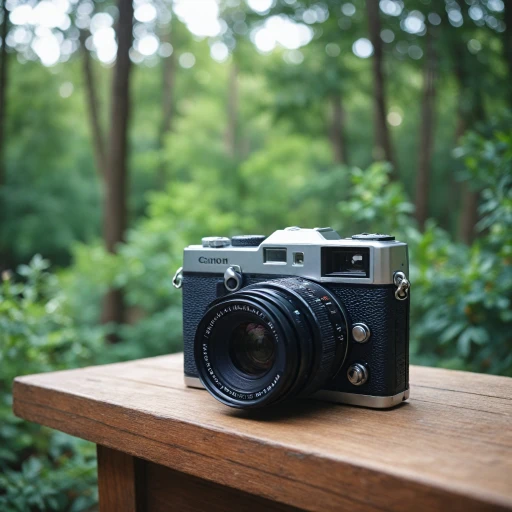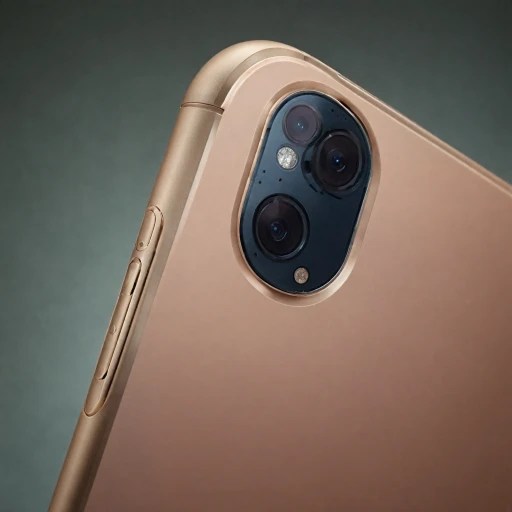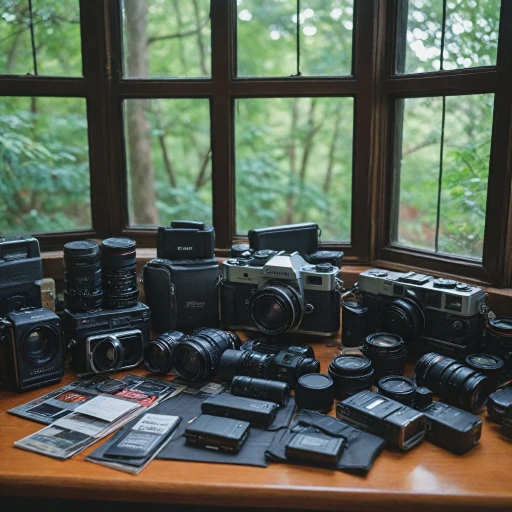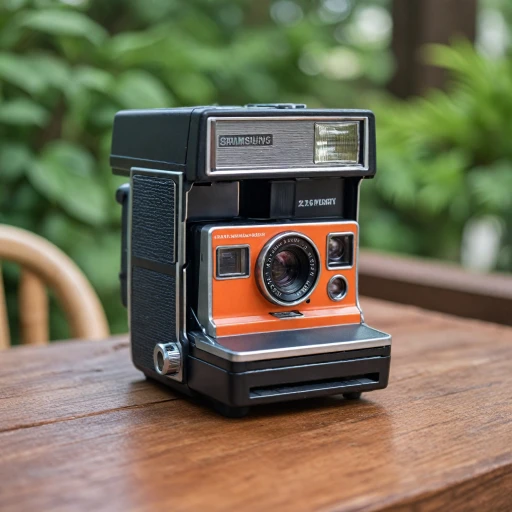
Understanding the Basics of Digital Cameras
Key Components of Digital Cameras
To capture the perfect moment, it's essential to first understand the key components that make up a digital camera. While many people rely on their phone cameras, such as the popular iPhone series, investing in a dedicated camera can dramatically improve your photography. Here's a breakdown of the primary elements to consider in a digital camera:
- Lens: The lens is perhaps the most critical component, as it affects image clarity, zoom capability, and overall quality. While Moment lenses provide great enhancements for cell phone cameras, professional cameras offer a wider array of lenses to meet various needs.
- Sensor: The size and quality of the sensor influence light capture, which is crucial for high-quality images. Compare sensor specs across options like the iPhone Pro Max and dedicated cameras before making a decision.
- Body and Durability: Consider investing in a rugged case or camera case to protect your equipment. Options like the Moment Rugged series and Case MagSafe offer durability for traveling photographers.
- Accessories: Additional lens mounts, wrist straps, and custom photo cases, like the Moment Case, can enhance your camera's functionality and ease of use.
For those starting out, weighing open box deals against new products can help keep budgets in line. Opting for the best camera stock might be the smartest move in the long run.
Choosing the Right Camera for Your Needs
Identifying Your Photography Needs
When it comes to choosing the right digital camera, understanding your specific needs is crucial. Are you looking to capture stunning landscapes or are you more interested in portrait photography? Maybe you need a versatile camera for travel? Consider what you'll be shooting most often. This will help you determine the type of camera and lens options that will suit your style.
Understanding Camera Types and Features
There are various types of cameras available, each with its own set of features and benefits. From compact point-and-shoots to more advanced DSLR and mirrorless cameras, the choice can be overwhelming. For those who prioritize portability, a compact camera or even a high-end smartphone like the Apple iPhone Pro with its impressive camera capabilities might be ideal. For more professional needs, a DSLR or mirrorless camera with interchangeable lenses could be the best option.
- Compact Cameras: Great for everyday use and travel. Easy to carry and often come with a fixed lens.
- DSLRs: Offer excellent image quality and a range of lens options. Perfect for those who want more control over their photography.
- Mirrorless Cameras: Combine the benefits of DSLRs and compact cameras. Lightweight and offer interchangeable lenses.
- Smartphones: Devices like the iPhone Pro Max are equipped with advanced camera systems and are perfect for casual photographers.
Budget Considerations
Price is a significant factor when choosing a digital camera. While high-end models offer more features, there are plenty of budget-friendly options that still deliver excellent performance. Consider if you need additional accessories like a camera case, lens mount, or a rugged case for protection. Open box deals can also be a way to save money while getting a quality product.
Exploring Additional Accessories
Once you've chosen a camera, consider investing in accessories to enhance your photography experience. A moment case or a case with MagSafe compatibility can provide added protection and convenience. A wrist strap or a lens mount can also be useful, especially if you plan on using your camera in various environments. For those who are serious about photography, investing in moment lenses can significantly improve the quality of your shots.
For more insights on selecting the right camera, you might want to explore the world of medium format film cameras as they offer a unique perspective on photography.
Mastering Camera Settings for Optimal Shots
Fine-Tuning Your Camera for Excellence
Exploring the settings of your digital camera is instrumental in capturing the perfect photo. For those transitioning from using a phone camera, such as an Apple iPhone, to a more advanced digital camera, acknowledge that mastering these settings can significantly enhance your photography skills. First, familiarize yourself with the basics of ISO, aperture, and shutter speed. These core elements dictate the exposure and depth of your photos, allowing you to adapt to different lighting conditions and motion scenarios. For example, adjusting ISO can compensate for low light without using a flash, keeping the essence of the moment intact. If you're passionate about creating professional-quality images, consider interchangeable lenses that complement your camera body. Options like wide-angle or macro lenses can be game-changers for landscape or close-up photography. Also, explore accessories like the lens mount for seamless attachment and removal on-the-go. The importance of storage cases cannot be overlooked. Using a rugged case ensures your camera is protected against unexpected elements, while a moment case lets you attach moment lenses to your cell phone to take impressive snapshots, even when you don't have your main camera with you. Additionally, a magsafe mount or wrist strap can offer extra security and flexibility. Furthermore, you may want to invest in specialized gadgets like a pro microphone to enhance your camera's capabilities for capturing audio, read more about this on how to enhance your action camera. Such equipment provides the edge you might need when chasing professional-grade results. Finally, keep in mind the vast array of camera settings at your disposal. Explore manual and automatic modes, and don't shy away from testing different settings to discover what truly brings your photos to life. Remember, understanding and harnessing the full potential of your digital camera is a continuous journey, one aimed at preserving those perfect moments with maximum impact.Techniques for Capturing Memorable Moments
Unveiling Photography Awesomeness with Simple Tips
Capturing memorable moments with your digital camera can be a delightful journey. Whether you are using a high-end camera or the camera on your iPhone, the key lies in mastering a few essential techniques. The charm of photography lies in its ability to tell stories, and with the right approach, each photo can become a part of a greater narrative.
Start with exploring your surroundings and finding inspiration in everyday scenes. It's amazing how much impact a change in lighting or a shift in perspective can have on an image. Consider the time of day as a factor—sometimes, a moment captured during the golden hour can transform an ordinary scene into extraordinary art.
When handling your camera, whether it's the Apple iPhone Pro or another model, stability is crucial. A tripod or a sturdy case with a wrist strap can proffer the needed support. Investing in a phone case or a moment case that allows for easy use while preserving the phone's function is advisable. Some moment rugged cases even come with options to add additional moment lenses, expanding the scope of what you can capture.
For more flexibility in shot composition, explore different lens options. Some manufacturers offer kits—often termed as open box deals—that come with different lenses to help find the best configuration for your needs.
Finally, remember that practice makes perfect. Engage with diverse photography styles to understand how your camera responds to different conditions. Experiment with the case mounts or try a case magsafe for easier lens swapping. Whether taking photos with your iphone under a black night sky or a creative setup using a box mount, the journey is about learning and finding what truly speaks to your photographic eye. Each click is an opportunity to enhance your skills and capture moments worth cherishing.
Post-Processing: Enhancing Your Photos
Enhance Your Photographs with Skillful Editing
Every photo you capture has the potential to become a masterpiece with the right post-processing techniques. Editing your photos is an essential step to enhance and bring out the best of those cherished moments. Consider these tips to optimize your post-processing workflow:- Start with the Basics: Adjust basic settings like brightness, contrast, and saturation. These changes might seem minor, but they can significantly impact your image's overall look and feel.
- Utilize Cropping and Framing: Sometimes reframing your shot can make all the difference. A simple crop might highlight the subject better, eliminating distractions and focusing attention where it's needed.
- Play with Filters: Filters can add a creative flair to your images. While smartphones like the iPhone Pro often have built-in options, professional editing software provides a broader range of tools to explore.
- Dodge and Burn: This technique can help you add depth and draw attention to specific areas of an image. Lighten (dodge) or darken (burn) certain sections to enhance the subject.
- Sharpen for Clarity: Enhance the sharpness of your images to bring out finer details, especially beneficial when printing photographs. However, over-sharpening can introduce unwanted noise, so use it sparingly.
- Make Use of Lens Correction: If you're using multiple lenses, like those from the moment rugged series, lens correction tools can help fix distortions or perspective issues, ensuring the focus remains on your subject.





